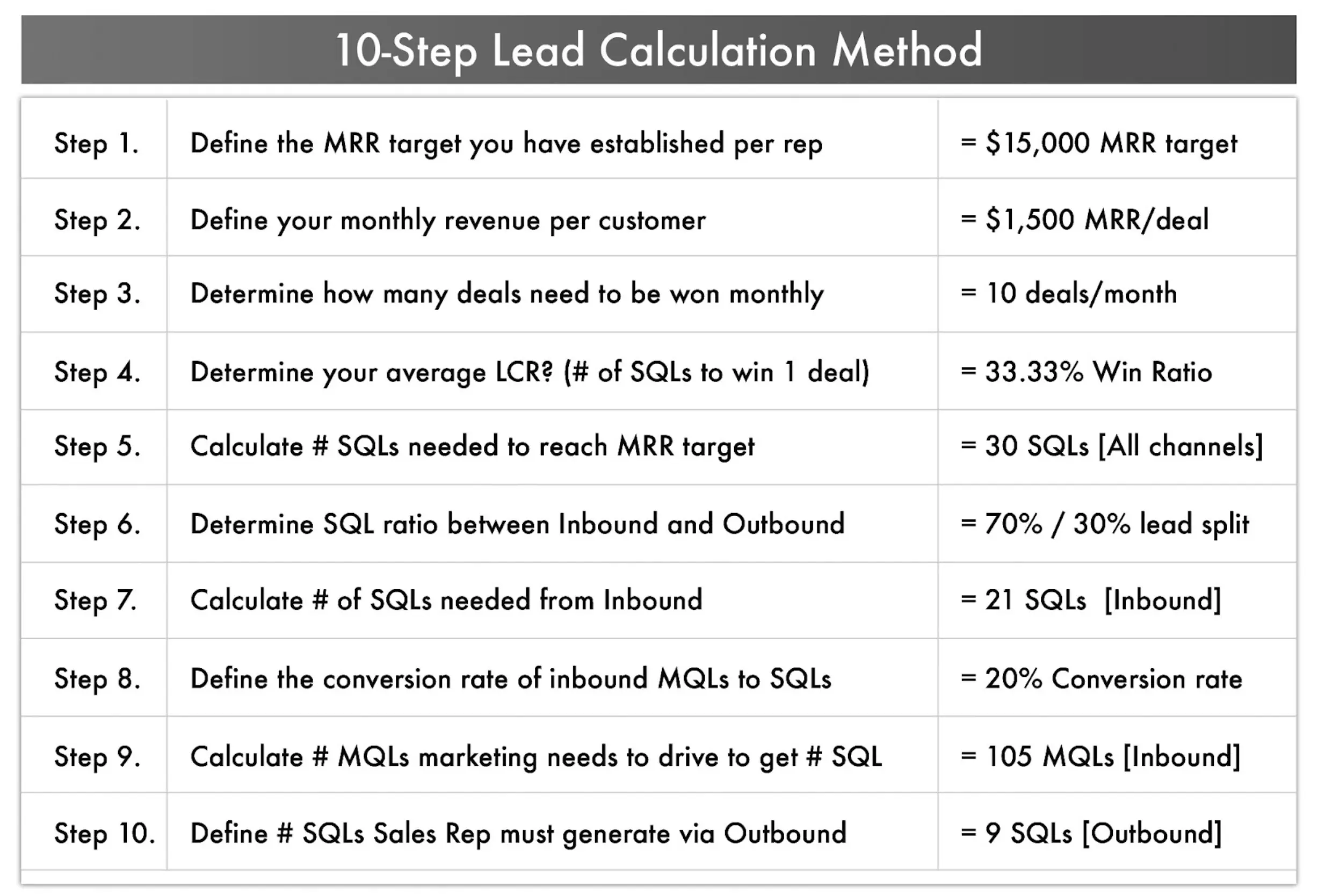How often have you seen sales and marketing teams become completely siloed and operate with different strategies and priorities?
This is one of the more common pitfalls I’ve also fallen into—as have many companies.
There’s a number of reasons for this, often pointing right to the top leadership who fail to grasp the extremely negative impact it can have on revenue performance and staff morale.
In fact, according to sales and marketing statistics, when marketing and sales operate in full alignment, businesses see a 27% faster profit growth.
The concept of “Smarketing” expresses the process of integrating sales and marketing objectives into a unified strategy to avoid or minimise this problem from taking root.
Furthermore, those companies’ with robust alignment grow their revenue by up to three times faster than companies with siloed teams. Compelling numbers don’t you think?
“Smarketing” is Reinvigorated by Metrics & Data
One of the most effective ways to foster marketing and sales alignment is by establishing and agreeing on sales metrics right out of the gate.
Then collectively working on improving all these indirect revenue and profit-generating metrics.
An effective way is to begin with the end in mind, and use some of your previously defined sales metrics to calculate backwards.
Then, based on industry standards, determine how much a) marketing resource is required and b) where to amp up your coaching efforts, in order to hit your established targets. I use the following 10-step lead calculator in both my Accelerator Platform and marketing agency.
In the hypothetical example below, I start with looking at the overall monthly sales quota ($15K). Then using a set of metrics calculations as shown, you can drill down all the way to determine how many leads are required to come respectively from Marketing (105 MQLs) and the Sales Reps’ own prospecting efforts (9 SQLs) in order to hit the target.

If you aren’t taking this suggested approach, you’ll likely bang your head against the wall.
As often happens, your marketing director manages the relationship with your marketing agency (who have their own priority metrics by the way) while your sales manager is running hard pursuing new sales targets.
The result? Everyone’s failure to achieve targets at best, or worse, a lot of unproductive finger-pointing, as illustrated below.
The Classic Sales vs Marketing Conversation: Adversarial
The conversation, in a B2B or SaaS company for example, quickly becomes something along the lines of this (perhaps a bit rudimentary but hopefully you’ll get the point):
Business Owner: “We must grow revenue by 25% this quarter and get 50 new clients onboard”
Sales Manager: “I need leads.. A lot of them, if I gotta meet that 25% sales growth KPI!”
Marketing Manager: “I need 25% more budget to generate enough leads for sales”
… And then when the end of quarter comes around:
Business Owner: “Not only did we miss our target by a mile, we also spent 25% more on marketing than originally budgeted. We’re bleeding red this quarter”
Sales Manager: “I missed the targets because the leads marketing assigned us were poor and most suspects didn’t even want to speak with us or have enough budget”
Marketing Manager: “Sales didn’t follow up on the leads properly and were so desperate to close deals quickly that they discounted heavily. So that’s why we didn’t hit target”
This conversation would never have taken place if a comprehensive set of sales metrics were in place. Why?
A business owner with metrics such as CAC (Customer Acquisition Cost), LCR (Lead Conversion Rate), ARPA (Average Revenue Per Account), SSG (Same Store Growth) and more in place, would be far better suited to understand exactly what it would take in order to grow their revenue and book-of-business by this rate.
They’d also be better informed to know whether the increase in marketing budget allocation should translate into profitability and by when (avg. sales cycle, LTV (Lifetime Value), margins, etc.)
A Smarketing Conversation: Collaborative
And since sales and marketing would share the same metrics and have insights to the same data, a more collaborative conversation would likely take place by asking questions such as:
- How can marketing help sales by providing a series of blog posts, white papers, case studies or other resources that can help influence our win-rates?
At my agency elev8.io, I always ask my clients (often the Marketing Director) the following key question: Can your content strategy (typically based on an SEO ranking strategy) also potentially help sales with moving deals down the funnel more effectively?
- How can sales provide better feedback to marketing on leads per channel?
The goal is for marketing to better understand some of the intangibles of paid advertising lead generation and better optimize the ad spend per channel.
I see this all the time when a proper feedback loop between marketing and sales isn’t established. A high volume of low cost leads which converts at a low rate may actually be counterproductive as it ties sales up with unqualified prospects.
This prevents sales from focusing on high revenue opportunities and allows deals to fall through the cracks because sales bandwidth is scattered across too many low-potential opportunities.
- How can we align initiatives and establish cross-departmental KPIs to collaborate better and meet our overall company growth targets?
In Chapter 6 of my book, The Zero to 100 Million Sales Blueprint, I provide 25 recommended sales and marketing metrics you can consider for further guidance.
- How can sales provide better feedback to marketing on what our prospects and customers are asking for so that we can improve our direct response campaign messaging?
A quick way to get this communication going is to establish a weekly Smarketing meeting. Include Account Executives and Sales Development Representatives along with Marketing Coordinators, so that it’s not just VP of Sales plus your Marketing Director in collaboration at a macro level.
- How can marketing support sales better to re-engage leads by implementing lead nurturing initiatives that can reignite interest from otherwise cold prospects?
I love this initiative because there’s often so much hidden gold in the sales pipeline. If marketing creates an effective segmented lead nurture campaign then sales can experience a significant uptick in performance.
The Key: Get Your Metrics Aligned Early
With all of these considerations, I hope it’s now obvious to you why your company as a first priority—right after doing your research and building your sales plan, before hiring—should establish all pertinent metrics per your expected customer journey.
Otherwise, you’ll find yourself saying the following phrase in meetings 100+ times a year (and obviously not the way to go!):
“If we have data, let’s look at data. If all we have are opinions, let’s go with mine.”
More Effective Smarketing Tactics
P.S. Here are a few additional tactics I’ve used over the years to create better alignment between sales and marketing. I recommend the following:
- Run cross-departmental contests with joined company outings, trips, etc to better build relationships and a better understanding of each other’s team members
- Run a bi-weekly or monthly sales and marketing meeting where departments work together
- Implement career trajectory paths that allow sales to move into marketing roles in your company and vice versa (when suited to the candidate of course). You’ll be surprised how much that can influence collaboration
- Place your sales and marketing offices right next to each other. Or better yet, put both teams in a big open office space with desks next to each other
- Agree on terminology and assign each department responsible for educating the other on otherwise “mystical” concepts to limit misunderstandings
Sales and Marketing Alignment Gets Results
As a little incentive for you to take action on this concept, here are some stats from recent studies showing that, companies with strong sales and marketing alignment are:
- 67% more efficient at closing deals
- Achieving 20% annual revenue growth
- Seeing 208% growth in marketing revenue
Good luck putting these concepts into action. And let me know if you want to talk over any of them.








